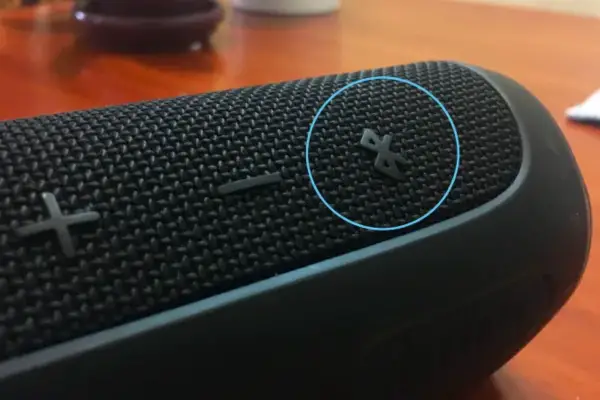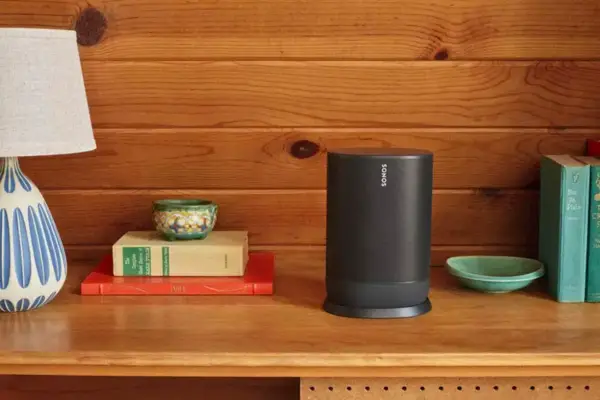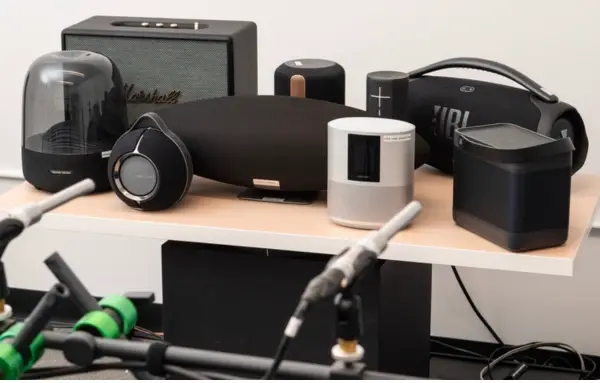How Do Bluetooth Speakers Work?
Remember the days when we had to deal with tangled wires just to listen to our favorite tunes? Audio systems have come a long way since then. From big boomboxes to tiny earbuds, the journey has been all about making music more accessible and enjoyable. But, what’s the real magic behind the wireless sound we enjoy today?
That’s right, we’re talking about Bluetooth technology. So, how do Bluetooth speakers work? And why have they become the go-to for most of us, making those messy cables feel like a thing of the past?
Let’s dive in and uncover the magic behind this modern marvel…
What is Bluetooth?
Before we know how Bluetooth speakers work, we should take a quick trip down memory lane for a good understanding of what it actually is…
Bluetooth got its unique name from a 10th-century king, Harald “Bluetooth” Gormsson, who united Denmark and parts of Norway. Just like King Harald brought people together, Bluetooth technology aims to connect devices without the fuss of wires.
But what exactly is Bluetooth? At its core, it’s all about short-range wireless communication. Think of it as a special language that devices, like your phone and headphones, use to chat with each other over short distances. Instead of sending a song through a cable, your phone beams it through the air to your speaker.
Cool, right? This tech not only makes our lives wire-free but also lets our devices communicate seamlessly.
Fundamental Components of a Bluetooth Speaker
If you’ve ever wondered what’s going on inside that little box playing your favorite tracks, here’s a breakdown:
Transmitter (typically your device)
The magic starts here. Your phone, tablet, or computer isn’t just for scrolling through social media or watching videos. When it’s time to groove, it becomes the transmitter, sending out audio data.
The techy bit? It uses specific profiles like A2DP for streaming music and AVRCP for remote control. Think of these profiles like different languages, helping your device and speaker chat smoothly.
Receiver (the speaker)
Once your speaker gets the audio data, what’s next? Enter the receiver. This part of your speaker listens in, grabs that transmitted data, and decodes it. It’s like receiving a letter and opening it to read the message inside.

Amplifier
You’ve got your decoded audio, but it’s not ready to rock just yet. It needs a bit of a boost. That’s where the amplifier comes in. It takes the sound and turns it up a notch (or several). The quality of this boost can make a big difference. A good amplifier means you’ll hear those bass beats and high notes clearly, even at higher volumes.
Speaker Drivers
Now, it’s showtime. The decoded, amplified signal reaches the speaker drivers, which are the real heroes behind every thump, strum, or vocal you hear. These drivers vibrate and produce the sound waves that reach our ears.
Different types of drivers, like woofers for low tones and tweeters for high pitches, make sure every note is on point. So, next time you’re jamming out, give a nod to these tiny powerhouses inside your speaker.
The Bluetooth Pairing Process
Ever wondered how your phone and speaker become BFFs with a simple click? It’s all about the Bluetooth pairing process. Let’s break it down:
Steps involved in pairing devices:
- Discovery Mode: First things first, make sure your speaker (or any other Bluetooth device) is in “discovery” or “pairing” mode. This means it’s actively searching for other devices to connect to.
- Searching for Devices: On your phone, tablet, or computer, go to the Bluetooth settings and search for available devices.
- Making the Connection: When you see your speaker’s name pop up on the device list, tap on it. If all goes well, you’ll get a connection confirmation, and sometimes a beep or a light indication from the speaker itself.
- Confirmation: Some devices might ask for a passkey or show a prompt to confirm the pairing. Just follow the on-screen instructions, and you’re good to go!
How devices ‘remember’ each other:
After the first successful pairing, devices usually remember each other. This is thanks to the pairing history stored in their memory. So, the next time you’re in range, they can automatically reconnect without the whole song and dance.
Common issues and troubleshooting tips:
- Not Discovering the Device: If you can’t see your speaker on the available device list, ensure it’s in pairing mode and that it’s not already connected to another device.
- Failed Pairing: Sometimes the devices just don’t click. If pairing fails, try turning off both devices and starting fresh.
- Connectivity Drop: If your connection drops frequently, ensure there are no physical obstructions or electronic interferences nearby. Devices like microwaves or other wireless gadgets can sometimes play spoilsport.
- Forget and Reconnect: If all else fails, go to your device’s Bluetooth settings, ‘forget’ or ‘unpair’ the speaker, and then try reconnecting from scratch.
And that’s it! A quick behind-the-scenes look at the Bluetooth pairing dance. It’s all about making connections and keeping the tunes flowing.

Audio Transmission via Bluetooth
So you’ve paired your devices, and now you’re wondering: How does my favorite song fly through the air and land perfectly on my Bluetooth speaker? Let’s dive in and uncover the sound’s journey via Bluetooth.
Compression and Codecs:
Ever tried stuffing a big suitcase into a small overhead bin? That’s a bit like trying to send high-quality audio over Bluetooth. It’s too bulky! So, Bluetooth uses some clever tricks to make it work.
- Importance of Audio Codecs: Codecs are like special tools that squish (compress) your audio so it can travel fast and then expand it (decompress) on the other side. Different codecs do this job differently.
- SBC (Subband Coding): The basic codec that all Bluetooth devices support.
- aptX: Offers better sound quality than SBC and is used in many premium headphones and speakers.
- AAC (Advanced Audio Codec): Commonly found in Apple devices, offering good sound quality.
- LDAC: Sony’s baby! It allows three times more data to be transmitted than SBC.
- How They Affect Sound Quality: Just like squishing a suitcase can wrinkle your clothes, compressing audio can affect its quality. The better the codec, the fewer wrinkles (or audio artifacts) you’ll hear. For the audiophiles, this difference can be crucial, but for many of us jamming out in the kitchen, the differences might be subtle.
Transmission Range:
Ever noticed your tunes drop out when you wander too far from your speaker? Here’s why:
- Typical Range: Most Bluetooth devices have a range of about 30 feet (or 10 meters). But remember, this is in open space. Walls and obstacles can reduce this range.
- Factors Affecting It:
- Obstacles: Walls, furniture, and even people can get in the way.
- Interferences: Other devices, like Wi-Fi routers or microwaves, can cause disruptions.
- Device Capabilities: Some devices just have stronger Bluetooth signals than others.
- Understanding Class 1, 2, and 3 Devices:
- Class 1: These are the beasts! They can transmit up to 100 meters, but they’re more power-hungry.
- Class 2: Your typical personal devices fall here, with a range of about 10 meters.
- Class 3: These have the shortest range, up to 1 meter, and you won’t find them in many consumer products.
So, the next time you’re streaming your favorite track, take a moment to appreciate the invisible magic happening around you. Your tunes are taking quite the journey before reaching your ears!
Advantages of Bluetooth Speakers
Bluetooth speakers have burst onto the scene and have quickly become a staple in our day-to-day lives. But why have they won our hearts so fast? Let’s break down their charm:
Portability and Ease of Use:
Gone are the days of bulky sound systems and dragging around a mess of wires. Bluetooth speakers often fit in the palm of our hands or snugly into our bags. Going to the beach, having a picnic, or just moving from room to room? Your speaker is ready to roll. And using them? A cinch! Turn on, pair, and play – it’s as easy as 1, 2, 3.
Compatibility with Multiple Devices:
Whether you’re Team iPhone, Android loyal, or still jamming with an old tablet device, Bluetooth speakers don’t play favorites. They get along with almost every device. This means you can switch between your phone, laptop, or any other Bluetooth-enabled device without a hitch.
Affordability and Variety of Choices:
There’s a Bluetooth speaker for everyone, from budget-friendly options that don’t skimp on quality to high-end models that dive deep into sound excellence. And they come in all shapes, sizes, and colors! Whether you’re into sleek and minimal or quirky and colorful, there’s a speaker out there with your name on it.
Reduced Cable Clutter:
Remember untangling headphone wires or searching for that one specific cable? Bluetooth speakers have kicked that hassle to the curb. No wires, no fuss. Your space stays clean, and so does your mind.

Limitations and Considerations
While Bluetooth speakers have become a favorite for many music lovers, they come with their own set of quirks. Let’s dive into some areas to keep in mind:
Audio Quality:
- How Bluetooth Might Compromise Audio Quality: Bluetooth involves compressing audio data to transmit it wirelessly. Depending on the codec used (remember SBC, aptX, and LDAC?), there can be some loss of audio fidelity.
- Comparing with Wired Audio Systems: Wired systems don’t have to compress audio in the same way, so they often deliver clearer, more detailed sound. Audiophiles might notice these differences more than casual listeners, but there’s no denying a wired connection generally has the edge when it comes to pure sound quality.
Battery Life:
- Power Consumption Concerns: Since Bluetooth speakers are wireless, they rely on their built-in batteries or external power sources. Streaming over Bluetooth consumes power, which means you’ll need to charge your speaker now and then.
- Tips for Maximizing Battery Life:
- Lower the volume a bit. Playing at max volume can drain the battery faster.
- Turn off extra features like LED lights or bass boosters if not needed.
- Remember to switch off your speaker when not in use.
Interference Issues:
- Common Sources of Interference: Other wireless devices, Wi-Fi routers, cordless phones, microwaves, and even some LED lights can interfere with Bluetooth signals.
- Solutions and Preventive Measures:
- Keep your Bluetooth speaker away from other electronic devices, especially those using the same frequency (2.4 GHz).
- If you’re experiencing dropouts, try changing the Wi-Fi channel on your router or moving your speaker to a different location.
- Ensure both your device (like your phone) and your speaker are updated with the latest software or firmware. Manufacturers often release updates to improve connectivity and address interference issues.
In the end, while Bluetooth speakers have some limitations, they’re still a fantastic choice for most situations. Just weigh up the pros and cons based on where and how you’ll be using them. And always enjoy the tunes!
How Do Bluetooth Speakers Work?
We’ve come a long way from the days of chunky boomboxes and tangled cassette tapes. Today’s Bluetooth speakers encapsulate the essence of modern innovation: compact, convenient, and capable.
As many wonder “how do Bluetooth speakers work?”, their rapid evolution and adoption showcase our society’s desire for technology that fits seamlessly into our fast-paced and mobile lives.
But as with any technology, Bluetooth speakers are not one-size-fits-all. Their diverse range, from pocket-sized wonders to room-filling powerhouses, means there’s a perfect match out there for everyone. Happy listening!

I am a passionate and skilled car audio enthusiast with 15 years of experience in the industry. My journey started when I replaced my first set of factory car speakers, sparking a deep love for high-quality sound. Since then, I have worked as a representative for renowned brands like Kenwood and Alpine.
With a background in both retail and distribution, I have developed a comprehensive understanding of the car audio market. Currently a certified (MECP) installer in the Mobile Electronics industry, my expertise lies in delivering top-notch audio installations. My knowledge, coupled with my genuine passion, makes me the go-to professional for all car audio needs.


